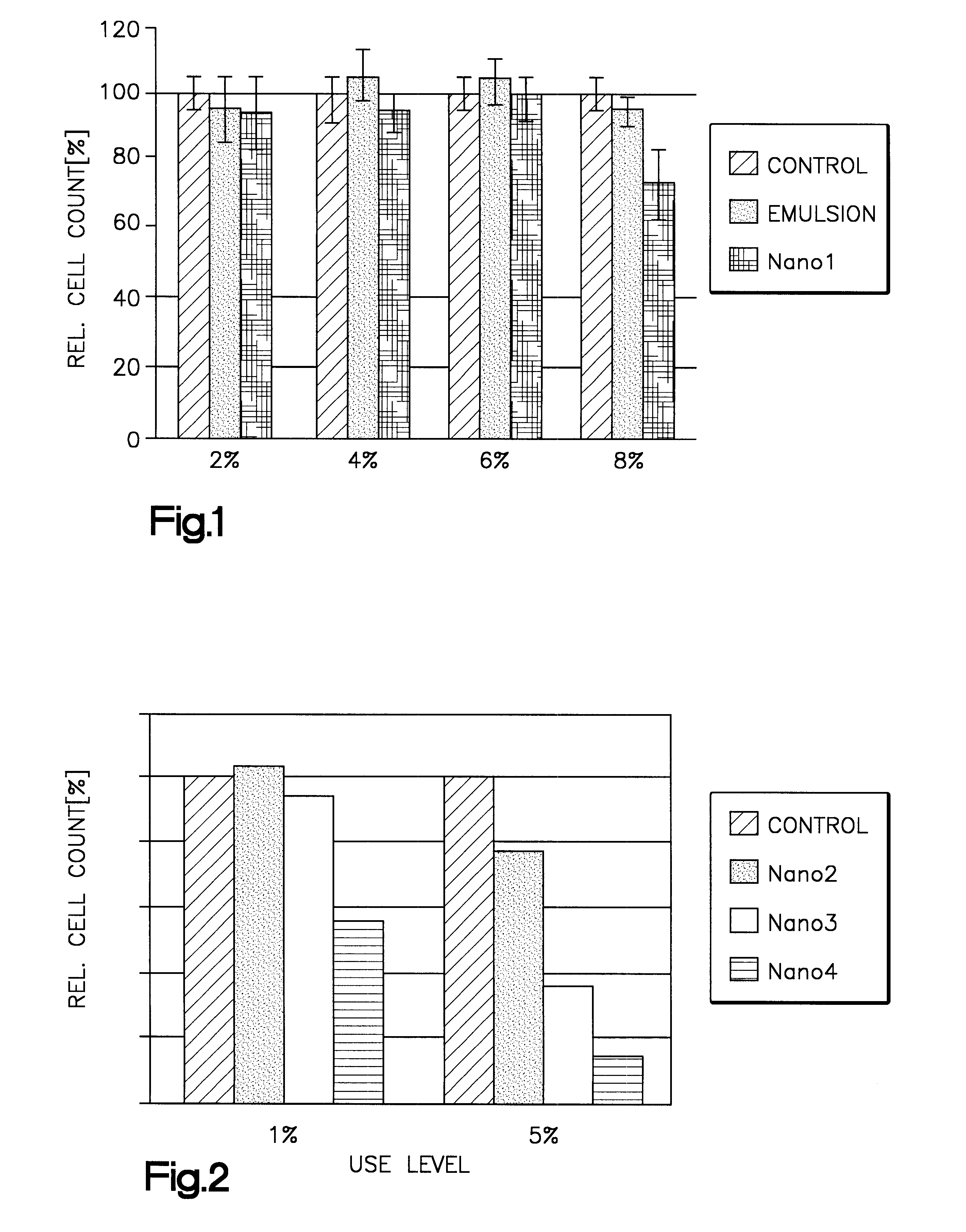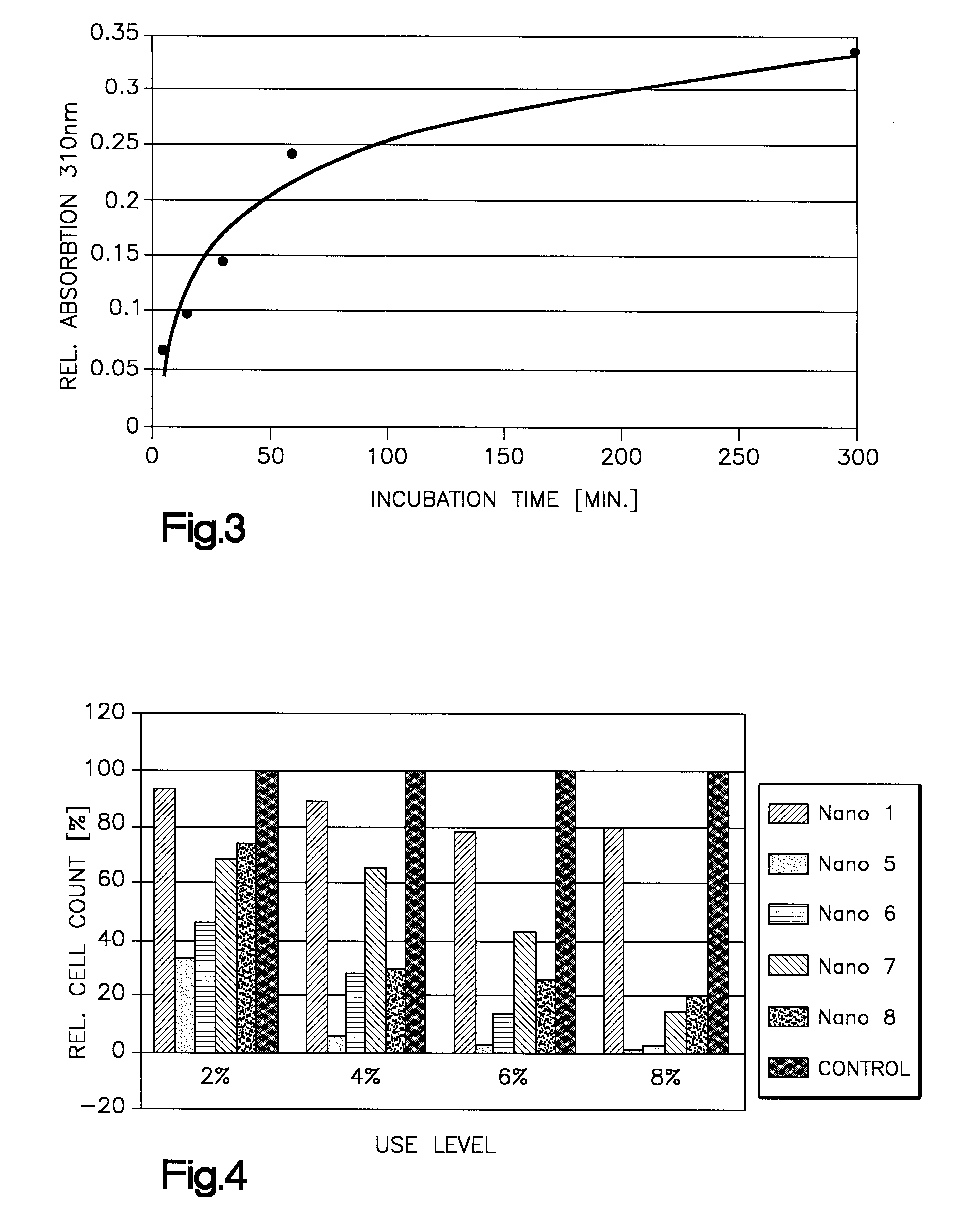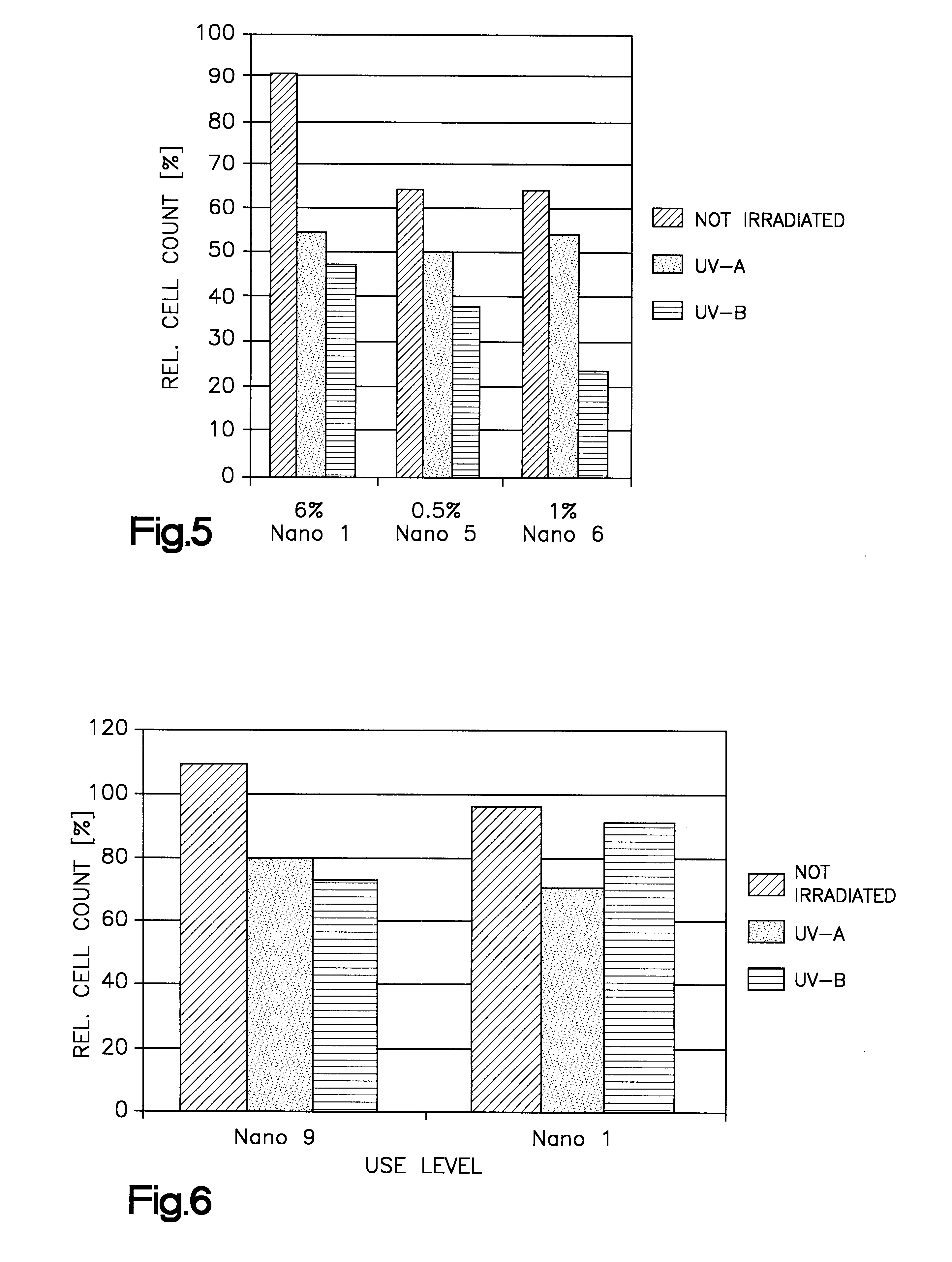Nanoemulsions for delivering lipophilic substances into cells
a lipophilic substance and nanoemulsion technology, applied in the field of nanoemulsions for delivering lipophilic substances into cells, can solve the problems of undefined dispersions of said substances having a low bioavailability, application of test substances which are insoluble in water, and severe disadvantages of supplementation of said medium with blood serum, etc., to achieve low toxicity to cell cultures, and low toxicity
- Summary
- Abstract
- Description
- Claims
- Application Information
AI Technical Summary
Benefits of technology
Problems solved by technology
Method used
Image
Examples
example 1
Treatment of TK6-lymphoblastoid Cells with a Nanoemulsion having a Low Toxicity
TK6-cells were cultivated in a RPMI-1640 medium, which was completed with 2 mmol of glutamine, 5% of gentamycin and 10% of horse serum. The cell suspension was inoculated into new cell culture flasks every 2 to 3 days. The number of cells was determined by means of a Neubauer chamber. The influence of Nanoemulsion 1 and of the void lecithin particles (liposomes) on the cell growth was determined for different concentrations after 2 days.
FIG. 1 shows the relative cell numbers compared to untreated cells ("Contr" is 100%). Nanoemulsion 1 ("Nano 1") has no influence on the cell growth up to a concentration of 6%. The emulsifier ("Emul") has even no influence on the relative cell number up to a concentration of 8%.
FIG. 2 shows that nanoemulsions comprising other oil components are essentially more toxic than the oil in Nanoemulsion 1 when using the same concentration and the same emulsifier. In FIG. 2, the oi...
example 2
Controlled Delivery of an UV filter into TK6-lymphoblastoid Cells by Means of a Nanoemulsion
TK6-cells were cultivated in a RPMI-1640 medium, which was completed with 2 mmol of glutamine, 5% of gentamycin and 10% of horse serum. 1%, 5%, and 10%, respectively, of Nanoemulsion 5 were added to the cell suspension (7.times.10.sup.5 cells / ml). After an incubation time of 10 minutes 10 ml each of the culture were centrifuged, and the cells were washed twice with 10 ml of buffer. The amount of UV filter in the cells was determined after extraction with chloroform by measuring the absorption (Table 1). Using Nanoemulsion 5, defined amounts of UV filter could be delivered into the cells.
The uptake of the nanoparticles into the cells is time-dependent.
FIG. 3 shows the time-depending course of the uptake of UV filters into the cells. 2.times.10.sup.5 cells / ml were incubated with 2% of Nanoemulsion 5. After 5, 15, 30, 60, and 300 minutes, respectively, 10 ml each of the cell culture were centrif...
example 3
Controlled Delivery of an UV Filter into Fibroblasts and TK6-lymphoblastoid Cells by Means of a Nanoemulsion
The TK6-cells were cultivated as described in example 1. The fibroblasts (Normal Human Dermal Fibroblasts) were cultivated in a serum-free medium (PromoCell.RTM.). 2% of Nanoemulsion 6 were added to the cultures, and after one hour the amount of incorporated UV filter was determined in the same manner as described in example 2 (Table 3).
Composition of Nanoemulsion 6
PUM
| Property | Measurement | Unit |
|---|---|---|
| Fraction | aaaaa | aaaaa |
| Percent by mass | aaaaa | aaaaa |
| Diameter | aaaaa | aaaaa |
Abstract
Description
Claims
Application Information
 Login to View More
Login to View More - R&D
- Intellectual Property
- Life Sciences
- Materials
- Tech Scout
- Unparalleled Data Quality
- Higher Quality Content
- 60% Fewer Hallucinations
Browse by: Latest US Patents, China's latest patents, Technical Efficacy Thesaurus, Application Domain, Technology Topic, Popular Technical Reports.
© 2025 PatSnap. All rights reserved.Legal|Privacy policy|Modern Slavery Act Transparency Statement|Sitemap|About US| Contact US: help@patsnap.com



